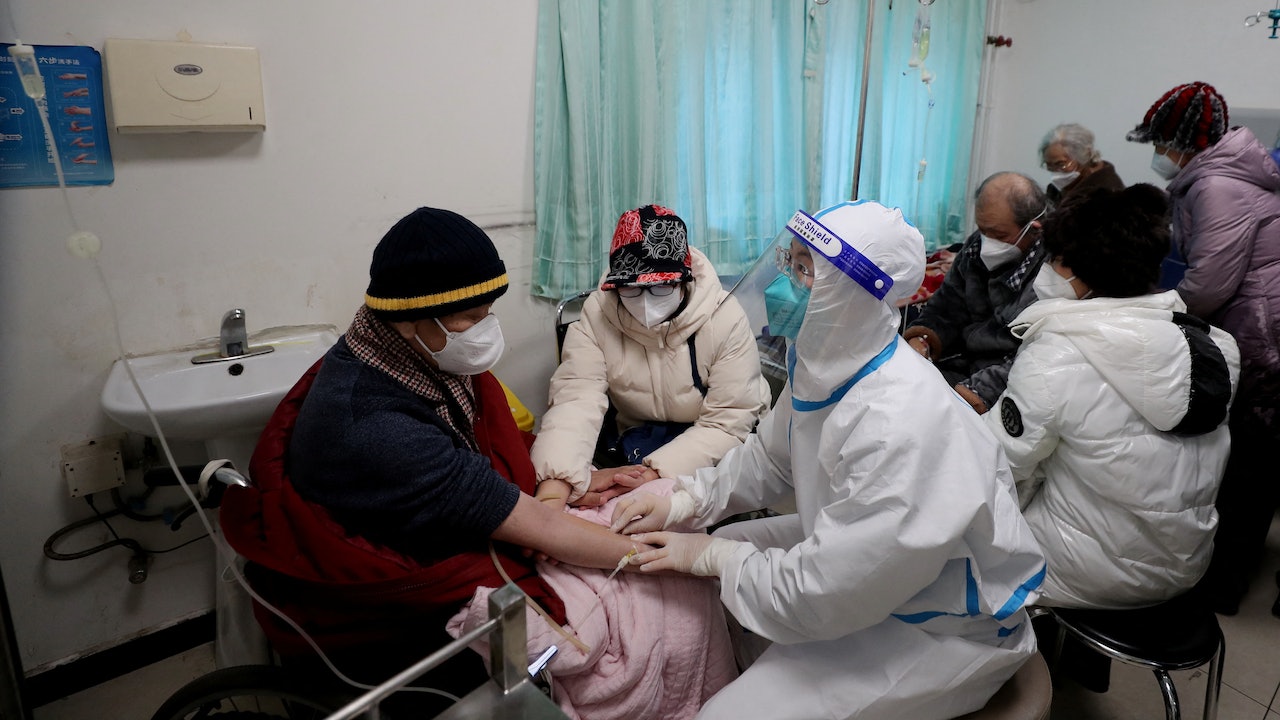The Centers for Disease Control and Prevention (CDC) respiratory virus surveillance system shows that since this spring, human metametapneumovirus (HMPV) cases without a specific treatment have increased in various regions of the United States, and the virus is ravaging intensive care units and pediatric hospitals in many hospitals in the United States.
According to the website of the Hong Kong Centre for Health Protection, the virus is a single-stranded RNA virus that can cause acute respiratory infections in people of any age. Since its first discovery in 2001, the virus has been found around the world. This virus infection is more common in late winter or early spring.
According to the center, the virus generally affects children. However, adults, especially the elderly and those with weak resistance, can also be infected. The incubation period is generally 3 to 6 days.
According to the CFS, human metapneumovirus causes symptoms of varying severity in pediatric patients, such as fever, cough, nasal congestion, dyspnea or shortness of breath. Some children may develop otitis media, diarrhea, vomiting, rashes and fever and cramps. In adults, human metapneumovirus usually causes mild illness, including cough, hoarseness, runny nose and phlegm. Human metapneumovirus infection can also cause bronchitis or pneumonia, similar to upper and lower respiratory tract infections caused by other viruses.
According to the CFS, there is currently no specific treatment for human metapneumovirus infection, and patients should pay attention to hydration. In more severe cases, people may need oxygen and ventilator assistance.
The picture shows a woman receiving a booster shot of the new crown pneumonia vaccine in Thailand. (Reuters)
The People's Daily also pointed out that there are also sporadic infections in China, and most of the patients are young children. Most infections after infection are mild, but it is most feared that co-infection with HMPV may increase the risk of pneumonia in children.
The newspaper's health client reported that the chief doctor of the infection control center of a tertiary hospital said on the 3rd that according to scattered domestic reports in recent years, human metapneumovirus does exist in patients with respiratory tract infections, including upper respiratory tract infections and lower respiratory tract infections, accidentally causing regional infection outbreaks, which must be paid attention to in respiratory infection surveillance, and cannot be ignored in the etiology of respiratory infections.
According to the Centre for Health Protection, human metapneumovirus can cause acute respiratory infections in people of any age, and some children may develop otitis media, diarrhoea, vomiting, rash and fever and cramps. (Photo: Middle school student, non-infected student, profile picture)
Li Tong, chief doctor of the Department of Infection at Beijing You'an Hospital, once reminded that the virus is not a new virus and has appeared in the Netherlands, Britain, Finland, Australia, Canada, Kenya, Norway and other places. At present, children infected with the virus have also been detected in Beijing, Chongqing, Shenzhen and other places in China."
Li Tong also said that there is no vaccine and related drugs to prevent human metapneumovirus. Do not be overly anxious about this virus, human metapneumovirus infection is similar to other respiratory infections caused by viruses, and can be prevented on a daily basis.
Chinese doctors say there is currently no drug vaccine for human metapneumovirus. (Image: Shutterstock)
Li Tong once introduced that human metapneumovirus is a single-stranded negative-stranded RNA virus, which is one of the main pathogens causing acute lower respiratory tract infection in humans. It can cause upper and lower respiratory tract infections in people of all ages, with most recurrent infections being asymptomatic, symptomatic infections occurring mostly in young children or older people, and severe symptomatic disease occurring in older people, underlying lung disease, and immunocompromised individuals.
According to recent data from various countries, HMPV infection is widespread and seasonal, such as the United States, the Netherlands, the United Kingdom, Norway and Finland, which occur in late winter and early spring, while Chinese mainland and Hong Kong occur in late spring and summer.
A 2020 study published in The Lancet Global Health estimated that more than 2018 million children under the age of 5 were infected with HMPV in 1, of which more than 400,60 were hospitalized and more than 1,6 died.
According to a 9-year study in China based on nine provinces, 13-year-old children are the main incidence of HMPV, with a detection rate of 5.3%. HMPV can cause infection alone or with other respiratory viruses, and HMPV infection may increase the risk of pneumonia in children.
What is human metapneumovirus?
Doctors call human metapneumovirus a single-stranded negative-stranded RNA virus that is one of the main pathogens causing acute lower respiratory tract infections in humans. It can cause upper and lower respiratory tract infections in people of all ages, with most recurrent infections being asymptomatic, symptomatic infections occurring mostly in young children or older people, and severe symptomatic disease occurring in older people, underlying lung disease, and immunocompromised individuals.
How does human metapneumovirus spread?
Human metapneumovirus is transmitted primarily through human-to-human contact. Its most common routes of transmission are droplet transmission and contact transmission. Doctors say the most effective ways to prevent it are to cut off transmission, wear masks and wash their hands the right way.
